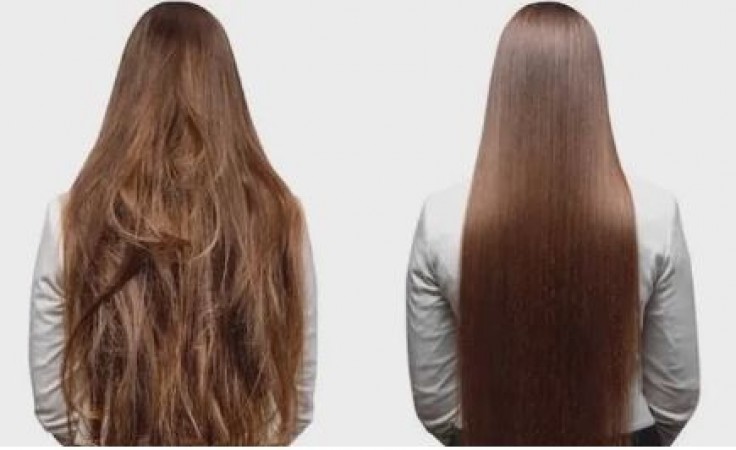
Keratin hair treatment is a popular option for those looking to smooth and straighten their hair, but is it the right choice for you? In this article, we will delve into the details of keratin treatments, exploring their benefits, drawbacks, and potential effects on your hair and overall health.
Keratin hair treatment involves applying a keratin-infused solution to the hair, which is then sealed with heat. This process aims to eliminate frizz, enhance shine, and make hair more manageable. Let's break down the process and see what it's all about.
Keratin is a protein naturally found in hair, skin, and nails. It provides structural strength and protection to hair strands. The treatment adds an extra layer of keratin to smooth and strengthen the hair.
The process typically involves:
Keratin treatments offer several benefits, making them a popular choice for those looking to improve their hair's appearance and manageability.
One of the primary reasons people opt for keratin treatments is to combat frizz. The treatment smooths the hair cuticle, reducing frizz and leaving hair sleek and shiny.
Keratin treatments can give hair a glossy, healthy appearance. The added keratin helps to reflect light, making hair look shinier.
If you struggle with tangled or unruly hair, keratin treatments can make daily styling easier. Hair becomes smoother and easier to brush and style.
Keratin treatments can last for several months, depending on hair type and care routine. This longevity makes them a cost-effective option for many.
While there are many benefits, it's also important to consider the potential downsides of keratin treatments.
Some keratin treatments contain formaldehyde, a known carcinogen. Prolonged exposure can pose health risks to both the client and the stylist.
Keratin treatments can be expensive, with prices ranging from $150 to $300 or more, depending on the salon and the length of the hair.
To maintain the effects of the treatment, you may need to use specific shampoos and conditioners, which can add to the overall cost.
Excessive use of heat during the treatment process can damage the hair, especially if the hair is already weakened or damaged.
If you're unsure about keratin treatments, there are several alternatives that can help you achieve similar results.
Deep conditioning treatments can hydrate and smooth the hair, reducing frizz and enhancing shine without the use of harsh chemicals.
Silicone serums and sprays can coat the hair, providing a smooth and shiny finish. These products are less invasive and can be used as needed.
There are at-home keratin treatment kits available that offer a milder version of the salon treatment. These can be a more affordable and convenient option.
It's crucial to understand the potential risks associated with keratin treatments, especially those containing formaldehyde.
Formaldehyde exposure can cause respiratory issues, skin irritation, and other health problems. It's important to ensure that the salon uses formaldehyde-free products or to take appropriate precautions during the treatment.
Overprocessing hair with heat and chemicals can lead to breakage and thinning. It's essential to have the treatment done by a professional to minimize these risks.
Certain individuals should avoid keratin treatments due to potential risks and adverse effects.
Due to the potential health risks associated with formaldehyde exposure, pregnant or nursing women should avoid keratin treatments.
Those with sensitive skin or allergies may experience adverse reactions to the chemicals used in keratin treatments.
If your hair is already damaged or weakened, keratin treatments may exacerbate the problem. Consider alternative treatments that are less harsh.
If you decide to go ahead with a keratin treatment, choosing the right salon is crucial to ensure safety and effectiveness.
Ensure that the salon and stylist are certified and experienced in performing keratin treatments.
Ask about the products used and ensure they are formaldehyde-free or contain safe levels of the chemical.
Look for reviews and testimonials from previous clients to gauge the salon's reputation and service quality.
Proper care after the treatment is essential to maintain the results and protect your hair from damage.
Sulfates can strip the keratin from your hair, reducing the longevity of the treatment. Opt for sulfate-free shampoos and conditioners.
Minimize the use of heat styling tools to prevent further damage to your hair.
Get regular trims to keep your hair healthy and prevent split ends.
There are several myths surrounding keratin treatments that need to be addressed.
Keratin treatments smooth and straighten hair temporarily. The effects last for a few months and gradually fade away.
While keratin treatments are popular among those with curly hair, individuals with wavy or even straight hair can also benefit from the smoothing effects.
Japanese straightening is a different process that permanently straightens hair. Keratin treatments are semi-permanent and focus on smoothing rather than straightening.
Keratin hair treatments offer a range of benefits, from reducing frizz to enhancing shine and manageability. However, they also come with potential drawbacks, including chemical exposure and cost. It's essential to weigh the pros and cons and consider alternatives if you have concerns about the treatment.
By choosing a reputable salon, understanding the risks, and following proper post-treatment care, you can enjoy the benefits of a keratin treatment while minimizing potential downsides. Whether you decide to go for a keratin treatment or explore other options, the key is to make an informed decision that best suits your hair type and lifestyle.
Mercedes-Benz launches amazing cars, luxury SUVs have powerful features
Indian Army Receives First Indigenous Suicide Drones with Reusable Technology